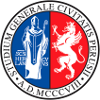Study-unit STATISTICS
| Course name | Business administration |
|---|---|
| Study-unit Code | 20007009 |
| Location | TERNI |
| Curriculum | Comune a tutti i curricula |
| Lecturer | Luca Scrucca |
| Lecturers |
|
| Hours |
|
| CFU | 9 |
| Course Regulation | Coorte 2022 |
| Supplied | 2023/24 |
| Supplied other course regulation | |
| Learning activities | Caratterizzante |
| Area | Statistico-matematico |
| Sector | SECS-S/01 |
| Type of study-unit | Obbligatorio (Required) |
| Type of learning activities | Attività formativa monodisciplinare |
| Language of instruction | Italian |
| Contents | Introduction to descriptive statistics. Mean and variability. Index numbers. Association between two variables. Introduction to probability. Random variables and probability distributions. Sampling distributions. Statistical inference. Point estimation and properties of estimators. Confidence intervals and hypothesis testing. Statistical models and inference for the simple linear regression model. |
| Reference texts | Borra S., Di Ciaccio A. (2021) Statistica: Metodologie per le Scienze Economiche e Sociali. 4a edizione, McGraw-Hill. Course slides available on the UniStudium webpage of the course. Solutions of selected exercises taken from the textbook will be made available on the UniStudium webpage during the course. |
| Educational objectives | The course provides an introduction to the principles and techniques of statistical data analysis. The main goal is therefore to provide students with the basic knowledge of descriptive and inferential statistics. The main knowledges acquired will be: • introductory elements and concepts of statistics; • numerical and graphic description of the data; • basic knowledge of descriptive statistics, probability calculus and statistical inference. The main skills (i.e. the ability to apply the knowledge acquired) will be: • read and interpret the statistical information produced by public and private institutions; • carry out simple statistical analyzes concerning economic and social phenomena. |
| Prerequisites | The statistical methods introduced in the course are strongly dependent on basic mathematical tools, therefore it is expected that students had successfully completed the Mathematics course and exam. |
| Teaching methods | Lectures and practical exercises. |
| Other information | Attending classes is strongly advised. |
| Learning verification modality | Written exam organized in two parts: the first part contains theoretical questions with closed answers, while the second part contains numerical data analysis exercises. |
| Extended program | Descriptive statistics: introduction. Statistical variables, statistical units and population. Classification of statistical variables. Unitary distributions and frequency distributions. Graphical representation of statistical distributions. Means: definition and formal properties. Arithmetic, geometric and quadratic mean. Median, mode, quantiles. Variability: definition and basic concepts. Indices of variability: variance, standard deviation, coefficient of variation, range, interquartile range. Statistical indicators and index numbers. Concentration. Homogeneity and heterogeneity. Indices of asymmetry. Standardization. Simple and complex index numbers (Laspeyres and Paasche). Istat consumer price index. Association between two characters: introductory concepts. Frequency distributions for two variables: independence indices. The linear correlation coefficient. Elements of probability. Random variables and probability distributions. Expected value and variance. Probabilistic models for discrete random variables: uniform, Bernoulli, binomial. Probabilistic models for continuous random variables: uniform, normal, Student t. Distribution of sums of random variables. Central Limit Theorem. Statistical inference: introduction. Concepts of sample, sample statistics and sampling distributions. Point estimation and properties of estimators. Interval estimation: basic concepts. Confidence intervals for the mean (sigma unknown and large samples) and the proportion (large samples). Hypothesis testing: introductory concepts. Hypothesis testing for the mean (sigma unknown and large samples) and for the proportion (large samples). Hypothesis testing for the difference between two means and between two proportions. Test of independence. Statistical models: simple linear regression model. Estimation of regression coefficients using the method of least squares. Decomposition of the total variance and the coefficient of determination. Normality of the errors and inference for the regression model parameters. Analysis of residuals and outliers. Inference for the mean response, and for the prediction. |


